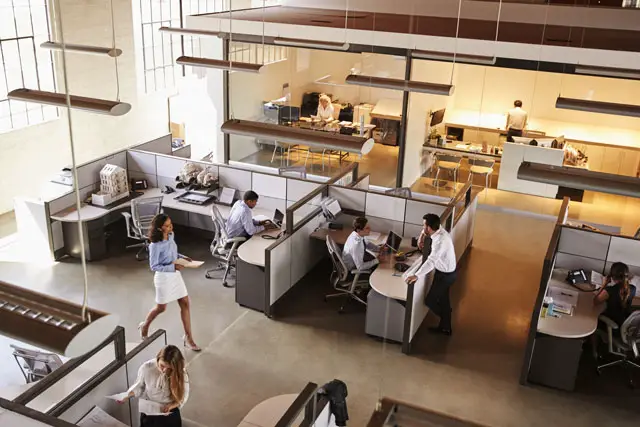
The workplace is the setting or location where individuals perform their jobs, tasks, and projects for their employer. This may vary in different ways and may be categorized into the realistic, investigative, artistic, social, enterprising, and conventional workplace.
Temperature and The Workplace
When working in an environment, it’s essential to identify different factors that may affect the employees. One of these is the workplace temperature. Temperature is a physical quantity manifesting thermal energy. It indicates how cold or warm an office or workplace may be.
Companies have found different ways to provide a suitable temperature for their employees. Some have structures that allow natural ventilation to enter through their windows. Another option is to use Packaged Terminal Air Conditioner (PTAC). You can visit sites like https://www.ptacinc.com/ to know how they can create your workplace better.
Before analyzing how temperature affects the workplace, here’s a brief definition of these workplaces for better understanding.
Realistic Workplace
This pertains to the environment where you use physical activity. Individuals in this area are considered as the doers or makers of the activity. An example of this would be engineers, construction workers, and maintenance workers. These individuals use tools and pieces of machinery to accomplish their tasks.
Investigative Workplace
This refers to the location where individuals are tasked to solve problems and to think comprehensively. This may refer to work locations for journalists and healthcare workers. Construction industries also fall under this kind of workplace when carrying out efficient construction plans.
Artistic Workplace
It’s a workplace that may or may not be outdoors, which allows artistic individuals to create. This could also be any workplace where you can find inspiration in making arts like poems, painting, or any performance that your heart desires.
Social Workplace
This is a workplace where you provide help, counseling, and guidance to your clients. Social workers, nurses, and counselors are usually found in this kind of workplace.
Enterprising Workplace
This work environment is suitable for those who have skills in persuading other people. These individuals focused on communication through selling, convincing, and debating. Sales representatives and public servants are the individuals working in this kind of environment.
Conventional Workplace
This working environment is usually for office-based tasks wherein dealing and organizing paper works is the main focus. This is usually on finance-related work for a company.
Ways Temperature Affect Productivity
Here are ways how temperature affects workplace productivity.
1. Less Productivity
Many studies have shown that temperature lowers the production activity by 4% per degree when temperatures reach 27 degrees Celsius and above. This dramatically affects employee performance making it hard to finish their basic tasks.
In effect, the majority of the workers would find time to cool down, like buying a milkshake, taking a break, and going to the bathroom. This could negatively impact the business’s production activity. Employees can be harder to manage when environmental factors such as temperature affect them, so it’s best to provide high automated settings to avoid production delay.

2. Machine Overheat
Factories are usually known for their large machinery types. It’s also common knowledge that every machine has its own limitations, so being mindful of what temperature it can handle is important.
Studies have shown that machines generally overheat at a temperature of 180 degrees Fahrenheit or hotter. Thus, it’s best to upgrade the ability of devices for better cooling capacity. An overheated machine is most likely to get broken and changed, leading to a wide range of profit loss and investment for a new device.
It’s best to monitor a machine’s oil viscosity to know when it’s overheating and turn it off immediately. Another possibility is to employ self-repairing machines, so, the need for manual monitoring can be lessened.
3. Increase Spoilage of Labor Supplies
When handling a food business, it’s crucial to consider the raw materials’ temperature. An increase in temperature can also increase the risk of your materials being spoiled. For example, proteins such as meat and dairy products are needed to be stored at a cool temperature, probably at around four degrees Celsius or lower. Having these materials spoiled will result in significant economic loss and even diseases when served and used. Changing these spoiled materials is better than paying hospital fees, but both options are still unfavorable effects of the temperature.
4. Increase Employee Absences
Accomplishing tasks can be tiring already, and when working in a hot environment increases the risk of absenteeism. The majority of the surveys performed shown that employees are getting unmotivated to go to work due to high heat. A decrease in labor also means a decrease in production. Though these employees won’t get their payment for the day, it would still greatly affect the number of products made.
5. Distraction
There are many pieces of research conducted on employees working in a cold environment. Many of these had shown that employees are more prone to errors when exposed to a cold temperature. This is because the body utilizes more energy to convert heat to keep the body warm. Employees get more distracted on working and now are focused on how to keep themselves warm.
The cold temperature has also been shown to affect an employee’s behavior. It’s seen that they behave more coldly and appear to be less mannered.
Conclusion
The importance of a suitable working environment can’t be underestimated when it comes to ensuring business productivity. Both hot and cold temperatures affect the productivity of the employees.
It’s best to provide a setting that will make your employees calm and happy. In this way, they’re most likely to think fast and comprehend what they’re doing.
The post How Can Temperature Affect Workplace Productivity? appeared first on Mike Gingerich.
Read more: mikegingerich.com









